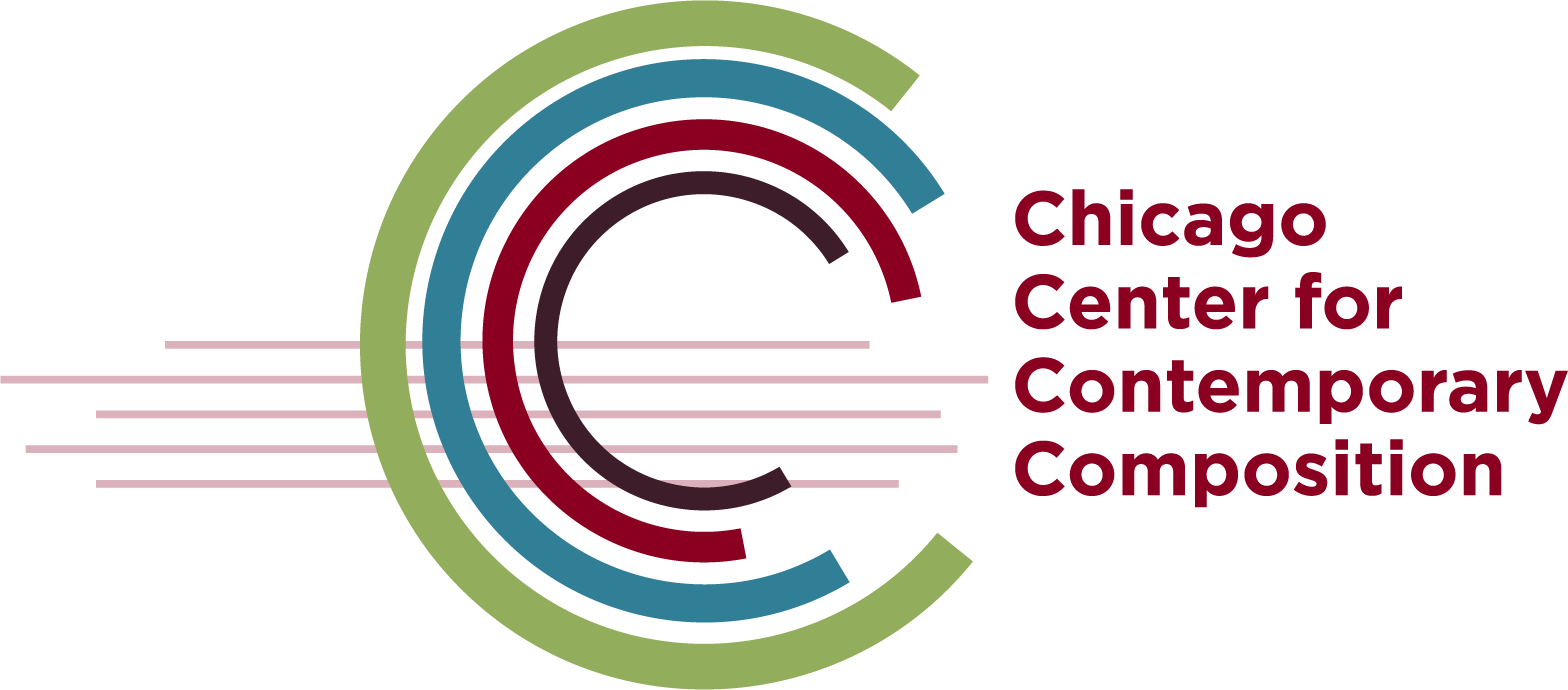
The Chicago Center for Contemporary Composition in collaboration with DanceWorks Chicago presents the world premieres of four works for musicians and dancers in an immersive interdisciplinary performance on Friday, March 24th, 2023, at 7:30pm at the Logan Center for the Arts.
This unique, one-night-only performance brings together Chicago artists across a range of fields and disciplines: it features the creative contributions of four composers, four choreographers, five musicians, six dancers, a poet, and a lighting designer. As part of the performance, the artists will introduce their new works, and audiences will gain insight into the creative process. The evening concludes with a celebratory post-performance reception.
The four new works on this program were created collaboratively in an artistic process spanning nearly a year by four composer/choreographer teams: Benjamin Martin/Brandon DiCriscio, Paul Novak/Marc Macaranas, Ania Vu/Noelle Kayser, and Justin Weiss/Brian Enos.
A special preview, featuring a performance of the work by Novak and Macaranas, was held at the Ruth Page Center for the Arts on Friday, March 3. Leo Mehring-Keller, a first-year student in the College studying music and intern with the CCCC, attended the event. He shares his reaction to the program below.
In an eerie yet captivating experience, the collaboration of composer Paul Novak, choreographer Marc Macaranas, and poet Victoria Flanagan present a performance that is both beautiful and deeply meaningful. Within the first minutes it is obvious that these artists were able to unite their talents to create a shared vision. Sensations such as a ripple are encountered in all three art forms, but there is never one that dominates the other. Whether it is a soft percussive sound that seems to emerge in the distance, the stressed syllable of a word, or the physically oscillating motion of a body, there is such cohesion in these events that it never feels as though one is necessarily in the lead.
The process of workshopping with the dancers clearly shines through to create this equality; some pairs worked first with dance, some with music, and some with both, and it is evident that there was more than one right answer here. On a more concrete level, this collaboration also wrestles with a very original idea about the intersection between queerness and ghost stories. Despite every composer/choreographer pair working with this theme, there is still a truly new interpretation with each performance. At times, all three art forms create a sense of motion blur that coincides with the spectral sonority of the music, but they each suggest different interpretations of the spiritual and physical relationship. If the question even occurs, there is never a definitive answer as to who is a ghost and who is a human, which pairs beautifully with the choreography’s refusal to obey conventional masculine and feminine duet roles. In conversation just as much as the dancers are with each other are these themes of ghosts and gender, with the obvious question arising of how a ghost can portray gender once it is dead. In a broader sense, there are not only distinctly haunting and mysterious musical timbres, but the performance as a whole is so transparent that it appears to become ghostly itself. From the transparency and vulnerability of the dancers in the beginning of the process to the end result of movements that feel as though we are seeing through the physical separation between audience and performers, it is an experience that stays incredibly true to its goal. —Leo Mehring-Keller




